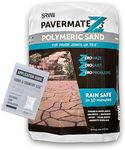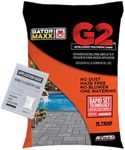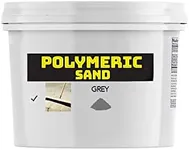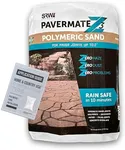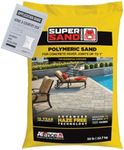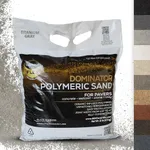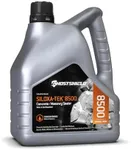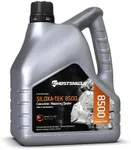Buying Guide for the Best Locking Paver Sand
Choosing the right locking paver sand is crucial for ensuring the longevity and stability of your paver installation. Locking paver sand, also known as polymeric sand, is used to fill the joints between pavers, helping to lock them in place and prevent weed growth, erosion, and insect infestation. To make an informed decision, you need to understand the key specifications and how they relate to your specific needs and project requirements.Grain SizeGrain size refers to the size of the individual particles of sand. This is important because the right grain size will ensure that the sand fills the joints properly and locks the pavers in place. Fine-grain sand is best for narrow joints, while coarse-grain sand is suitable for wider joints. If your pavers have very tight joints, opt for a finer grain size to ensure it can penetrate and fill the gaps effectively. For wider joints, a coarser grain size will provide better stability and locking power.
Polymeric AdditivesPolymeric additives are the binding agents mixed with the sand that help it harden and lock the pavers in place when activated with water. This is important because it enhances the durability and longevity of the paver installation. The amount and type of polymeric additives can vary, with some sands offering stronger binding properties than others. If your project is in an area with heavy foot traffic or exposure to harsh weather conditions, choose a sand with higher-quality polymeric additives for better performance.
ColorThe color of the locking paver sand can affect the overall aesthetic of your paver installation. This is important for ensuring that the sand complements the color of your pavers and enhances the visual appeal of your project. Locking paver sand comes in various colors, such as tan, gray, and black. Choose a color that matches or contrasts well with your pavers, depending on the look you want to achieve. For a seamless appearance, select a sand color that closely matches your pavers. For a more defined look, opt for a contrasting color.
Weather ResistanceWeather resistance refers to the sand's ability to withstand various weather conditions, such as rain, freeze-thaw cycles, and UV exposure. This is important because it ensures the sand remains effective and maintains its locking properties over time. Some sands are specifically formulated to resist erosion and degradation caused by weather. If you live in an area with extreme weather conditions, choose a sand with high weather resistance to ensure the longevity and stability of your paver installation.
Ease of ApplicationEase of application refers to how simple and straightforward it is to apply the sand to your paver joints. This is important because a product that is easy to use will save you time and effort during installation. Some locking paver sands come with clear instructions and are designed to be user-friendly, even for DIY enthusiasts. If you are new to paver installation or prefer a hassle-free process, choose a sand that is known for its ease of application and comes with comprehensive instructions.

